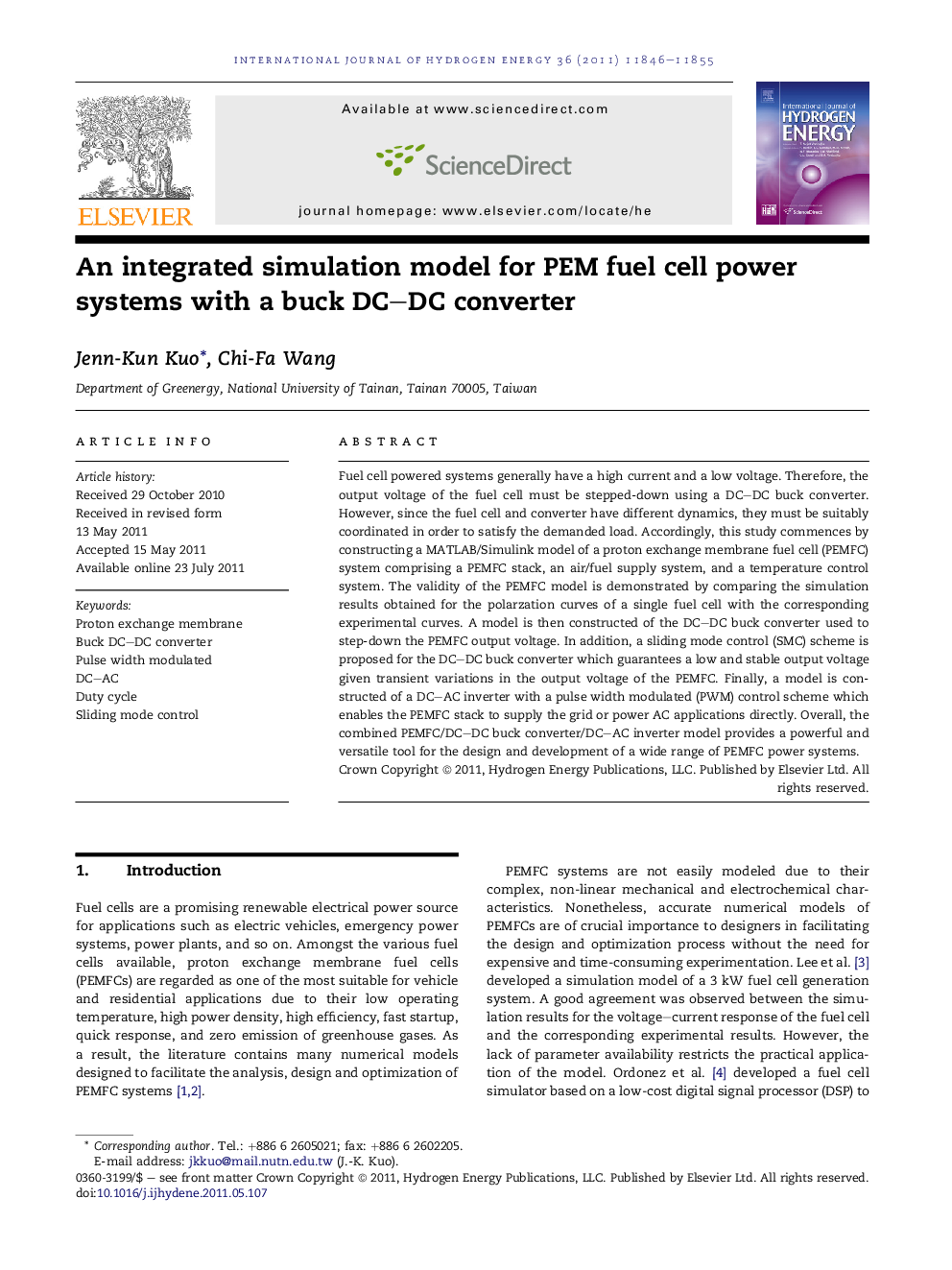| Article ID | Journal | Published Year | Pages | File Type |
|---|---|---|---|---|
| 1275877 | International Journal of Hydrogen Energy | 2011 | 10 Pages |
Fuel cell powered systems generally have a high current and a low voltage. Therefore, the output voltage of the fuel cell must be stepped-down using a DC–DC buck converter. However, since the fuel cell and converter have different dynamics, they must be suitably coordinated in order to satisfy the demanded load. Accordingly, this study commences by constructing a MATLAB/Simulink model of a proton exchange membrane fuel cell (PEMFC) system comprising a PEMFC stack, an air/fuel supply system, and a temperature control system. The validity of the PEMFC model is demonstrated by comparing the simulation results obtained for the polarzation curves of a single fuel cell with the corresponding experimental curves. A model is then constructed of the DC–DC buck converter used to step-down the PEMFC output voltage. In addition, a sliding mode control (SMC) scheme is proposed for the DC–DC buck converter which guarantees a low and stable output voltage given transient variations in the output voltage of the PEMFC. Finally, a model is constructed of a DC–AC inverter with a pulse width modulated (PWM) control scheme which enables the PEMFC stack to supply the grid or power AC applications directly. Overall, the combined PEMFC/DC–DC buck converter/DC–AC inverter model provides a powerful and versatile tool for the design and development of a wide range of PEMFC power systems.
► PEMFC's DC-DC buck converter used to step-down the unregulated output voltage of the stack. ► A sliding mode control scheme has been presented for conditioning the DC-DC buck converter. ► DC-DC buck converter to a 110 AC voltage and the pulse width modulation scheme used to generate the switching signal of the inverter. ► DC-DC buck converter and DC-AC inverter model provides a powerful fuel cell system.
